One of the enduring visuals from Reliance Industries’ 40th AGM held in July 2017 is that of Chairman Mukesh Ambani positioned in front of a giant blue screen displaying ‘₹0’. Ambani had just unveiled the JioPhone, a first-of-its-kind 4G-enabled feature phone developed by his company.
He called it ‘India Ka Smartphone’ and also stressed on the fact that it was ‘effectively free’ — indicated by the ₹0 on screen — that could be availed for Rs 1,500 (refundable after three years if the handset is returned).
The JioPhone had no precedent really. Nowhere in the world had a 4G feature phone been offered at that price point before.
The unique in-between device — neither a smartphone nor a conventional feature phone — let users make calls, chat in local languages, use a voice-enabled digital assistant, stream music and movies, read news, get media storage, and enjoy unlimited 4G data.
In millennial lingo, it was a steal!
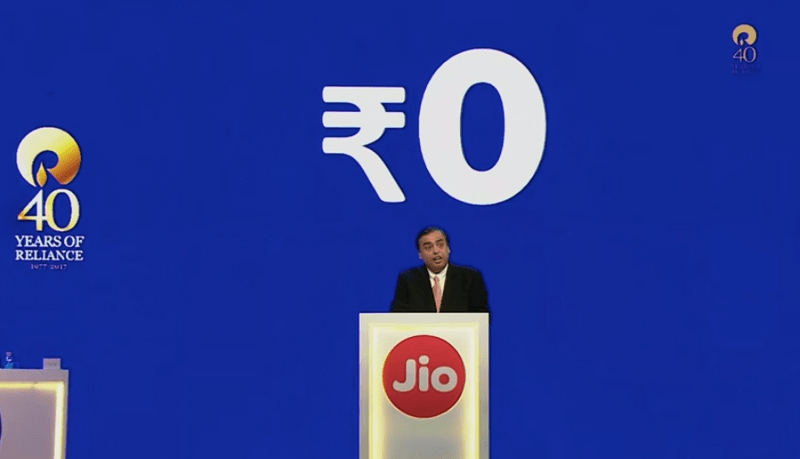
Mukesh Ambani at the launch of JioPhone in Reliance's 40th AGM in 2017
Reliance’s disruptive device would go on to alter the very landscape of India’s lower-end handset market.
A year later, in 2018, the company launched JioPhone 2, a QWERTY-led 4G feature phone. Changes included a higher price tag (Rs 2,999), a new form factor (which resembled a BlackBerry Curve), a larger display, and additional apps.
Cut to 2020 — Reliance is estimated to have sold over 100 million units of JioPhones, according to Counterpoint Research. It implies that nearly 26 percent of Jio’s total subscriber base (388 million) are JioPhone users.
In fact, the number could even be higher, but there are no official stats on JioPhone’s inventory pile-up from Q4 2019 and the pandemic-hit sales of Q1 2020. “We haven’t announced anything on JioPhone lately,” a Reliance Jio spokesperson told YourStory.
How JioPhone connected rural India
The JioPhone story essentially chronicles the rise of India as a mobile-first economy and the democratisation of the internet in a developing country.
When it launched, India had an estimated 500 million feature phone users, mostly scattered across semi-urban and rural areas. The smartphone revolution had eluded them. Consumers in these areas would upgrade from one feature phone to another year after year.
This was also the market segment that had garnered the least amount of attention from phone manufacturers, witnessing minimal innovation over the last decade. It was a space ripe for disruption, and Reliance went after this large, untapped, and under-served segment quite aggressively.
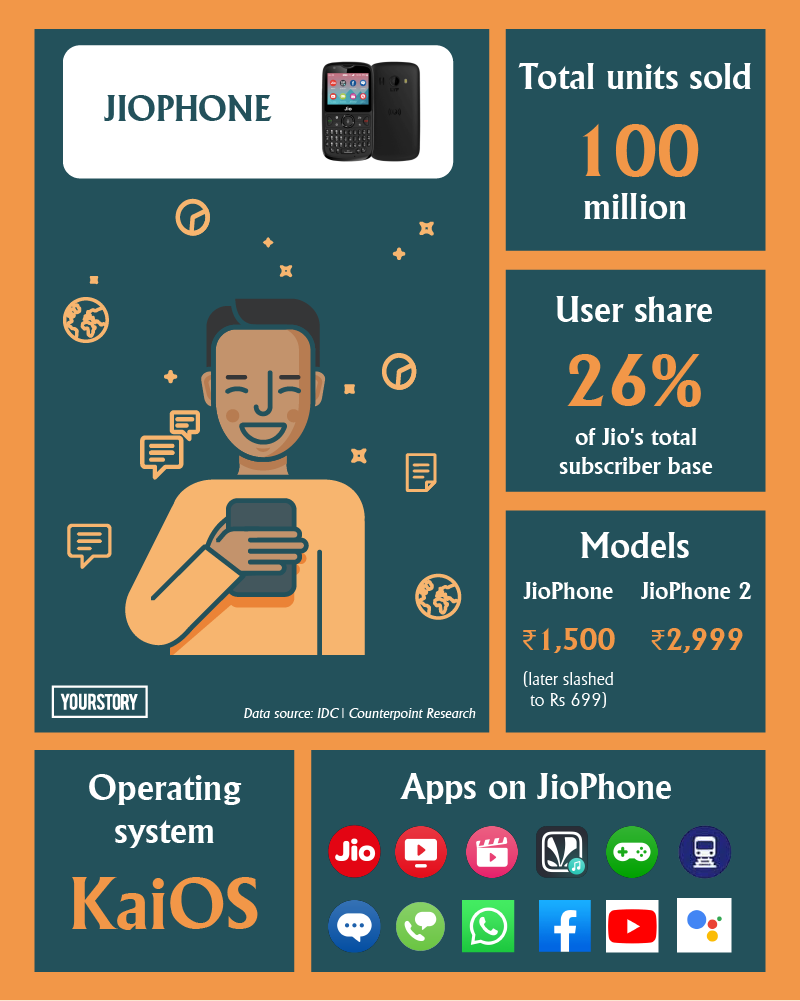
Infographic: Anubhav Anurag | YS Design
Tarun Pathak, Associate Director - Mobile Devices and Ecosystems, Counterpoint Research, tells YourStory, “JioPhone was able to attract a large segment of feature phone users who were not yet ready and willing, or were financially unable to upgrade to a smartphone. It became a pivot to connect Jio’s ecosystem of applications on an affordable and simple-to-use device for first-time users of 4G.”
Almost overnight, JioPhone converted swathes of users from 2G to 4G by luring them with entertainment, information, and connectivity along with a low-cost device upgrade. “While urban India gradually went from 2G to 3G to 4G, rural India skipped those stages. They got high-speed internet straight from nothing,” Tarun explains.
Even before its first sale, JioPhone recorded six million pre-orders. And by the end of 2017, it crossed incumbents Samsung, Micromax, and Nokia to lead India’s feature phone market.

“JioPhone captured a 26 percent share of the feature phone segment in just one quarter with its compelling value proposition compared to the normal 2G feature phones. The positioning of JioPhone as an ‘effectively free’ phone also worked for the company,” Counterpoint stated in a report.
Between then and now, India’s internet user base has grown to 504 million, and there are more rural internet users than urban ones, with mobile dominating the mode of access. JioPhone’s role in this is unmistakable.
IAMAI confirmed in a recent report,
“The spread of the internet has been possible due to the joint efforts of the government (promoting e-governance and Digital India vision) telecom service providers (more affordable data packages, better connectivity), and internet service providers ( digital entertainment, ecommerce, content in Indian languages).”
Disruptive pricing to bridge the digital divide
Differential pricing has long been an established tool for businesses to enter value-conscious market segments (rural India, for instance).
Jio’s strategy to chase the bottom-of-the-pyramid consumer with bite-sized data packs, specially tailored for the JioPhone, was a game-changer. In effect, Reliance did to telecom what HUL had done to FMCG when it introduced sachet pricing for shampoos and detergents in India back in the 90s.
Jio’s sachet pricing involved two-day and weekly data packs priced as low as Rs 24 and Rs 54, respectively. It enabled non-committal first-time 4G users to sample the offering before opting for a costlier plan (Rs 153/month).
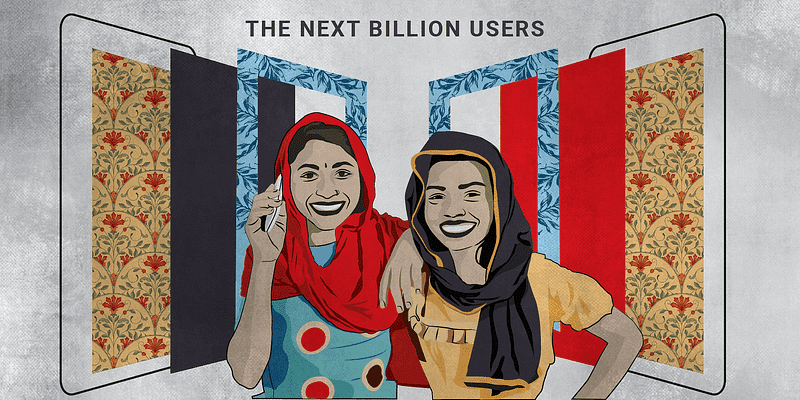
Phoot: YS Design
Explaining the disruptive pricing, Ambani said at the AGM,
“It is both unjust and ironic that 50 crore Indians who have feature phones pay more for voice calls and SMS than those with smartphones. They end up spending their entire month’s telecom budget of Rs 150-200 only to get 150 minutes of voice, while their smartphone counterparts on Jio network get voice for free... This makes it impossible for them to even think of using data, let alone avail advanced services like video calling, and mobile applications. This is the most critical problem in bridging the digital divide.”
Jio’s differential pricing instantly made data more accessible and affordable to India’s lowest common denominator. It also gave them an all-new world on a platter.
First-time data users could not only make free unlimited voice calls, but also access a bunch of pre-installed apps including Facebook, WhatsApp, YouTube, and Jio’s own suite (JioTV, JioCinema, JioSaavn, JioChat, JioVideoCall, and JioRail). From farmers to porters to labourers, small-town and rural India lapped it up.
Tarun says, “Jio was able to fundamentally change the internet usage pattern in India, more than doubling the average data consumption since its entry. A JioPhone user on an average consumes 9GB of data per month, which is greater than the country average.”
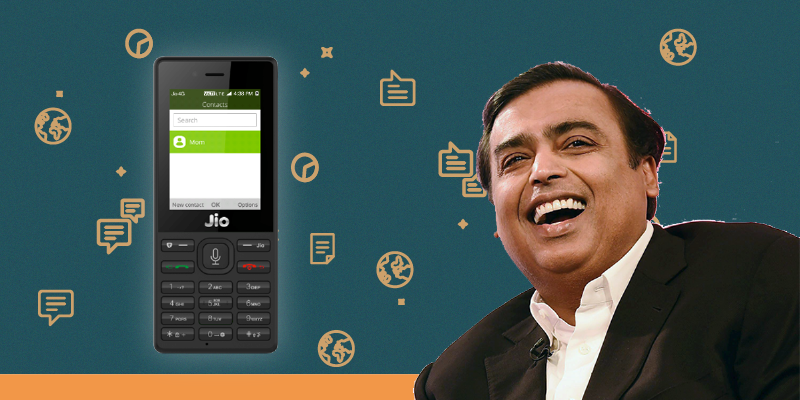
Photo: YS Design
Ushering in a low-cost phone revolution
By going after the lower-end phone buyer, Jio changed the dynamics of the sub-Rs 3,000 segment of India’s handset market.
Not only did the JioPhone induct millions of Indians into the internet ecosystem by reimagining the traditional feature phone, but it also cracked open the market for domestic phone manufacturers like Micromax, Karbonn, Lava, and Intex that were facing near obliteration due to the dominance of Xiaomi (through sub-brand Redmi).
Shortly after Jio’s disruptive entry into this segment, these manufacturers were roped in by rival telcos to build simple, pocket-friendly, and 4G-enabled devices.
Airtel partnered with Karbonn, Lava, Intex and Celkon; Vodafone-Idea roped in Micromax, and state-owned BSNL tied up with Lava and Micromax to launch a new ‘India’s cheapest smartphone’ every other day.
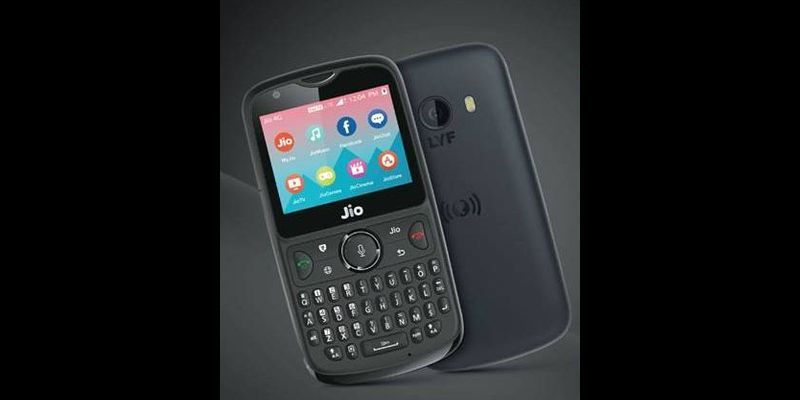
The JioPhone 2 was launched in 2018
Riding on the JioPhone, feature phone shipments in India witnessed the highest-ever quarterly growth of 55 percent even as smartphones stagnated. In 2018, JioPhone became India’s most shipped handset across segments.
It grabbed a 38 percent market share (Samsung was a distant second at 12 percent), and led to feature phones outselling smartphones in India. JioPhone even shortened the upgrade cycle for feature phone users by about two years.
At a macro level, it expanded India’s 4G feature phone segment, which Counterpoint projects to be a 200-million-unit opportunity by 2023. India continues to be one of the few markets globally where feature phones are still growing.
Declining market share and future outlook
Sometime in the middle of 2019, JioPhone started losing market share. From a peak of 47 percent in Q2 2018, its share fell to 28 percent in Q2 2019.
It was ceding ground to Samsung (9 percent to 21 percent), Lava (5 percent to 12 percent), and itel (6 percent to 10 percent).
JioPhone’s declining uptick was attributed to two reasons: steep pricing of JioPhone 2 (almost 2X of JioPhone), and the anticipation of a new device (JioPhone 3). Huge unsold inventory piled up across Reliance warehouses.
Demand dropped further when Ambani gave the JioPhone a miss at Reliance’s 42nd AGM, which saw the launch of JioFiber, and a slew of other services. In Q3 2019, JioPhone bowed out of the top five in feature phones. Its market share dropped to just four percent (behind Samsung, itel, Lava, Nokia, and Karbonn).
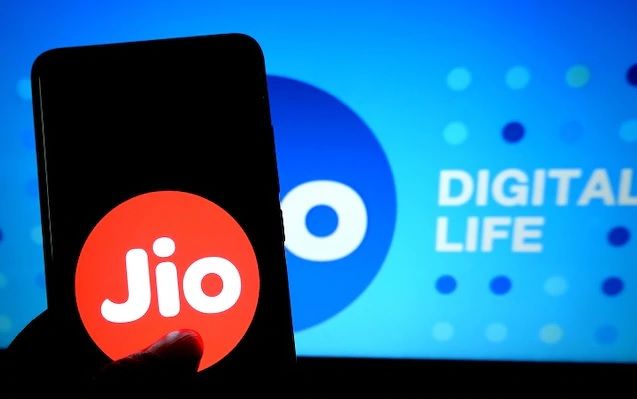
JioPhone’s decline impacted overall feature phone shipments in India. “The feature phone demand is back to the 2017 (pre-JioPhone) level but it remains to be seen if entry-level smartphones are able to attract users in coming quarters,” Anshika Jain, Research Analyst at Counterpoint, said in a 2019 report.
To arrest the fall, Reliance even slashed JioPhone prices to Rs 699 and bundled free data worth Rs 700 as part of a Diwali offer, which helped in clearing old inventory, with JioPhone sales growing from 70 million to 100 million units between Q3 2019 and Q1 2020.
Even though the coronavirus pandemic has put brakes on domestic demand, with phone shipments plummeting all over, analysts believe that JioPhone would be able to bounce back and regain the top spot in the feature phone category with slight tweaks in its pricing and packaging, including lower costs, more apps, and additional features.
There are an estimated 350 million people in India’s rural areas who are still without a smartphone or a dependable mobile network. Therein lies JioPhone’s opportunity to realise Ambani’s grand vision of connecting “99 percent of the Indian population”.
Jio is now flush with funds and strategic know-how from top global investors. So, it wouldn’t be a surprise if the JioPhone climbs to the top all over again.
(Edited by Saheli Sen Gupta)
Want to make your startup journey smooth? YS Education brings a comprehensive Funding and Startup Course. Learn from India's top investors and entrepreneurs. Click here to know more.
Link : https://yourstory.com/2020/06/mukesh-ambani-bridged-india-digital-divide-jiophone-reliance
Author :- Sohini Mitter ( )
June 15, 2020 at 05:50AM
YourStory




